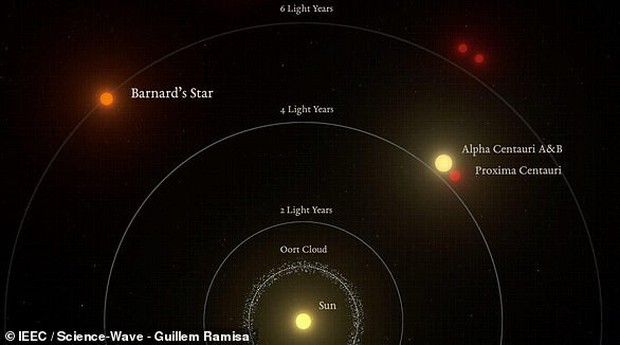Does life exist on this planet? Likely!
In November 2018, scientists confirmed that in the Barnard Star System just six light years away, there is a Super Earth, named Barnard b (GJ 699 b). It is the result of an observation process spanning more than 20 years.
And according to a recent study, we have a very important discovery on this planet. This Barnard b is quite capable of nurturing and sustaining life, even in its primitive form.
The world on Bernard b
We know that old evidence indicates that Barnard b is an icy planet, with a temperature comparable to that of the moon of Jupiter Europa (-150 ° C). At this temperature, there should be no living creatures. However, according to new research, it appears that the planet has a giant core containing molten iron or nickel. This will induce geothermal activities and, in turn, make life more explosive.
“Geothermal activity can create habitable areas under the surface of the planet, such as the bottom of Antarctic glacial lakes on Earth”, – said Edward Guinan, an expert from Villanova University.
“We recorded Europa’s surface temperature almost the same as Barnard b’s, but Europa even has an ocean under ice due to warming tides due to warming tides.”
“If water exists, the heat from geothermal activities could create habitable waters below the planet’s surface.”
Barnard and Proxima Centauri are the two star systems closest to the Sun.
Also according to Guinan, Barnard’s Star is one of the focused stars, as they are two star systems – the planet closest to the Sun next to Proxima Centauri. In addition, Barnard, now 9 billion years old, is “aged” twice as much as our Sun.
This could be proof that solid planets like Earth and some super-Earths exist across the galaxy, with numbers likely in the tens of billions.
Speaking of Barnard b, this is a solid planet three times the mass of Earth, orbiting a dwarf star, Barnard, with an orbit lasting 233 days, and at the same distance from Mercury to the Sun.
The light obtained from Barnard b to Earth is considered quite weak, but experts believe that future telescope systems will help us record the entire image of the planet.



